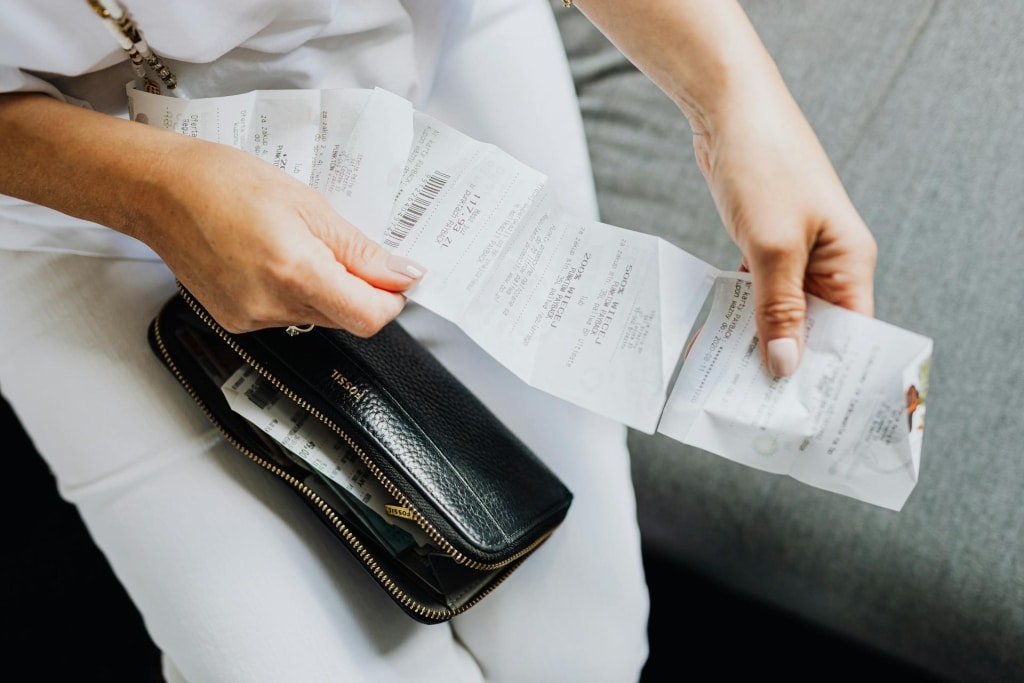Complete Philippines Country Guide for Expats and Travelers
- International Property Alerts
- June 19, 2025
Are you considering moving to the Philippines? Whether you’re looking for a fresh start or planning to retire in a tropical paradise, this guide will help you every step of the way. The Philippines offers a rich culture, beautiful landscapes, and affordable living. In this guide, we will walk you through everything you need to know about life in the Philippines.
From understanding the climate and cost of living to finding out about housing and rentals, we’ll cover it all. You’ll also learn about important topics like visa requirements, how to immigrate, and residency options. By the end of this guide, you’ll have a clear picture of what to expect when making the Philippines your new home. Whether you’re just visiting or planning to live here long-term, this guide is your first step toward a smooth transition. At International Property Alerts, we’re here to help you through every step of your journey. Let’s get started and discover all the exciting possibilities the Philippines has to offer!
Country Code

In this Country Guide Philippines section, we explain the basic codes and systems that help you stay connected and navigate your new environment. These simple yet important details will make it easier to plan your move or set up your daily life in the Philippines. If you’re exploring property options, browsing an international real estate listing site can help you discover homes and investments available in the Philippines and other countries.
Basic Details About the Philippines
Here are a few key things you should know:
- Country code (ISO): PH
- Phone code: +63
- Currency: Philippine Peso (PHP)
- Time zones: Philippine Time (PHT)
These details will help when calling local numbers, sending money, or checking the time. For example, knowing the phone code is essential if you need to call the Philippines from another country. Also, you may see PH as the country code when browsing online or filling out forms. It’s the official abbreviation for the Philippines, used globally. If you’re considering property investment or relocation, explore real estate in the Philippines listings to see what’s available across the country.
In addition, if you’re thinking about settling down in the Philippines, take a look at our properties for available homes and investment options. These small steps, like knowing the country code, will help you prepare for your move. Above all, they give you a strong foundation to start your new life in the Philippines.
Where is the Philippines?

The Philippines is located in Southeast Asia, made up of over 7,000 islands. It sits between the Pacific Ocean and the South China Sea. To the west, it borders the South China Sea, while to the east, the vast Pacific Ocean stretches out.
Key Location Facts
- Continent: Asia
- Surrounding countries: Taiwan to the north, Malaysia and Indonesia to the south
- Nearby bodies of water: Pacific Ocean and South China Sea
- Closest countries: China, Vietnam, and Brunei
The Philippines’ location makes it a beautiful and strategic spot for both travel and business. It’s close to other key Southeast Asian countries, making it easy to visit or connect with neighboring regions.
In addition, if you’re thinking about moving to the Philippines, the country offers a range of environments, from busy city life to quiet beachside towns. Whether you’re into urban living or a more relaxed lifestyle, the Philippines has something for everyone.
What’s the Weather Like in the Philippines?
In this country guide, we’ll look at the weather in the Philippines and what to expect throughout the year. The Philippines has a tropical climate, which means it’s generally warm and humid. However, it also experiences two main seasons: the dry season and the rainy season.
Weather by Season
- Dry Season: This lasts from December to May. The weather is hot and sunny, making it a great time for beach trips and outdoor activities.
- Rainy Season: The rainy season runs from June to November. During this time, there are heavy showers, but they usually don’t last long. The rain mostly comes in the afternoon.
So, if you’re planning to visit or move, the dry season is ideal for outdoor activities and travel. But even in the rainy season, many days are still warm and pleasant, especially in the mornings.
Regional Differences
- Coastal areas: Expect warm, tropical weather year-round, perfect for beach lovers.
- Mountainous areas: These regions are cooler, especially at higher altitudes, like in Baguio or Tagaytay.
In addition, if you’re considering real estate options, it’s important to keep the weather in mind. The Philippines’ tropical climate can influence your choice of location, especially if you prefer sunny weather or cooler climates.
Understanding the weather will help you decide when to visit or move. Above all, the Philippines offers a mix of weather conditions, giving you options depending on where you want to live.
Living Expenses in the Philippines

If you’re thinking about moving to the Philippines, it’s important to understand the cost of living. Knowing how much things cost can help you plan your budget and decide where to live. In this section, we’ll break down some common expenses like housing, food, utilities, transport, and healthcare.
Average Monthly Costs for One Person
- Rent: ₱8,475 to ₱28,250 for a small apartment, depending on the city or neighborhood.
- Food: ₱5,650 to ₱11,300 for groceries and eating out.
- Utilities: ₱1,695 to ₱4,520 for water, electricity, and internet.
- Transport: ₱1,130 to ₱2,825 for public transport, taxis, or gas.
So, the total cost of living in the Philippines can range from ₱22,600 to ₱56,500 per month for one person. In other words, it’s much more affordable than many countries like the U.S. or Europe. The cost may vary depending on where you live. For instance, cities like Manila may be more expensive, while smaller towns and rural areas offer cheaper living.
Filipino Culture and Traditions
Filipino culture is full of warmth, family, and celebration. If you decide to live in the Philippines, you’ll quickly notice the strong sense of community and connection. Understanding these values will help you feel at home and connected with others.
What You’ll Notice About Filipino Culture
- Family is very important. People in the Philippines spend a lot of time with family, and many households have several generations living together.
- Food is a big part of life. Meals are often shared with family and friends. Dishes like adobo, sinigang, and lumpia are popular. Sharing food strengthens bonds between people.
- Music and dancing are common in Filipino life. You’ll hear traditional music at festivals, and karaoke is a favorite pastime.
- Festivals and holidays are celebrated with joy and excitement. For example, Sinulog, Ati-Atihan, and Pahiyas are lively festivals full of colors, dances, and parades. These events often celebrate the country’s religious and cultural roots.
In other words, Filipino traditions are about connections, fun, and showing respect. The people value kindness and politeness, so it’s common to see friendly greetings and smiles wherever you go. Also, if you’re new here, locals are usually happy to share their traditions with you. It’s easy to join in, and you’ll quickly feel like part of the community.
How to Get a Visa and Move to the Philippines
In this country guide, we explain how to live in the Philippines legally. The visa process is straightforward once you understand the different types of visas and the steps involved. Whether you’re visiting for a short time or planning to stay longer, there’s a visa in the Philippines that fits your needs.
Types of Visas for the Philippines
- Tourist visa: Most people from the U.S., Canada, and Europe can stay in the Philippines for up to 30 days without a visa. If you want to stay longer, you can extend your stay.
- Temporary Resident Visa: This is for those who want to stay in the Philippines for more than six months but less than three years. You may need to show proof of income or savings.
- Permanent Resident Visa: This is for those who want to live in the Philippines full-time. It’s often given to retirees or people with Filipino family members.
So, if you’re planning on staying for an extended period, you’ll need to meet the Philippines residency requirements. These may include bank statements, a valid passport, and completed visa forms. In other words, you’ll need to show you can support yourself while living in the Philippines. At the same time, it’s useful to explore options for housing in the Philippines to help you prepare for long-term living arrangements.
Steps to Immigrate to the Philippines
If you’re ready to move to the Philippines, follow these basic steps:
- Choose the visa that fits your plan (tourist, temporary, or permanent).
- Visit the Philippine consulate in your home country to apply.
- Submit documents like your passport, bank records, and proof of address.
- If approved, travel to the Philippines and visit the local immigration office.
- Obtain your residence card and register your new address.
For instance, if you’re retiring, a permanent resident visa might be the best option. It lets you stay without having to renew your permit each year. In addition, you can apply for a visa before moving or visit the Philippines first to see if it’s the right fit for you. Above all, make sure you follow each step carefully to avoid any delays.
Finding a Home and Living in the Philippines

Starting a new life in the Philippines begins with finding the right place to live. Whether you’re renting for a short time or planning to stay long-term, there are plenty of options. In this guide, we’ll explain how to find a home, meet residency requirements, and enjoy your Philippines’ retirement in a peaceful and affordable way.
Where to Look for a Place
- Cities: Manila and Cebu offer modern apartments with plenty of services.
- Beach towns: Places like Boracay and Palawan are popular with expats and retirees.
- Quiet towns: Areas like Tagaytay and Baguio offer a more relaxed lifestyle with a cooler climate.
- Countryside homes: Some prefer small villages where life is slower and homes are more spacious.
Also, rental prices can vary depending on where you live and the size of the home. For instance, an apartment in the city may cost more than a house in a quieter town. Many people start by renting in the Philippines short-term, then decide on a long-term home once they are more familiar with the area.
What You Need to Live in the Philippines
To live in the Philippines legally, you must meet basic residency requirements. These rules ensure you can stay comfortably in the country.
Main Documents You May Need
- A valid passport
- Proof of income or savings
- Visa paperwork
- Local address (once in the Philippines)
- Health insurance (in some cases)
After that, you’ll need to visit the immigration office in the Philippines to complete the process and get your residency card. This card allows you to live in the country without needing to leave every few months.
Retiring in the Philippines
The Philippines is a popular choice for retirement. The weather is warm, the food is fresh, and the cost of living is affordable. In addition, healthcare in the Philippines is accessible and affordable, with many doctors speaking English.
Why Retire in the Philippines?
- Your money goes further.
- You can live near beaches or in peaceful towns.
- There’s a large expat community for support.
- The pace of life is slower and more relaxed.
In other words, retiring in the Philippines offers comfort and peace without spending too much. Whether you’re renting or buying, there are plenty of homes to match different budgets and lifestyles.
Quick Facts to Know Before Living in the Philippines
This guide gives you important facts about the Philippines to help you better understand their daily life. While these details may seem small, they can make a big difference when planning your move.
New and Helpful Things to Know
- Time Zones: The Philippines uses one time zone, Philippine Time (PHT), so you don’t need to worry about time differences across the country.
- Public Transport is Common: Jeepneys, tricycles, and buses are the main forms of transport. They are affordable and widely used by locals every day.
- Grocery Stores Vary: Big chain stores like SM Supermarket are common, but you can also find small markets and local shops with fresh food at lower prices.
- Internet Speeds: The internet is generally fast in cities like Manila and Cebu, but it can be slower in rural areas, though still good enough for video calls.
- Weather Changes by Region: Coastal areas like Boracay are warm and sunny, while higher-altitude areas like Baguio are cooler, even in the summer.
- Street Food is Popular: Vendors sell food like taho (sweet tofu), isaw (grilled chicken intestines), and banana cue (caramelized bananas) on almost every street.
Starting a new life in the Philippines can be exciting when you know what to expect. From food to transportation, this guide was created to keep things simple. So, whether you’re planning to move, retire, or invest, we’re here to help every step of the way. If you have questions or want assistance with your next move, feel free to contact us. We’re ready to guide you.
FAQs
Do I need a visa to visit the Philippines?
Yes, most tourists can stay in the Philippines for up to 30 days without a visa. You just need to show your passport when you arrive. In addition, you can extend your stay for a small fee.
What language is spoken in the Philippines?
The official languages are Filipino (based on Tagalog) and English. English is widely spoken, especially in cities, schools, and businesses. So, you won’t have trouble communicating in most areas.
What is the cost of living like?
The cost of living in the Philippines is much lower compared to many Western countries. For example, rent, food, and transport are affordable, especially outside big cities. Also, smaller towns offer a more budget-friendly lifestyle.
What is the weather like?
The Philippines has a tropical climate, which means it’s warm and humid all year. There are two main seasons: the dry season from December to May and the rainy season from June to November. So, it’s good to plan your activities around these seasons.
How do I find a place to live in the Philippines?
You can find homes for rent or purchase through real estate listings. The cost will vary depending on the area. Big cities like Manila or Cebu can be more expensive, while smaller towns offer cheaper options.
About International Property Alerts
International Property Alerts is a premier global platform connecting real estate investors with handpicked opportunities in emerging and lifestyle-driven markets. Through curated listings, expert guidance, and market insights, we help buyers make confident property decisions worldwide.
Media Contact:

Phone: +4477 1923 8132
📱 WhatsApp: +63927 073 9530
Email: office@internationalpropertyalerts.com
Services
Related Post
- Best Places To Retire
- Hidden Places Destination
- Best Regions To Retire
- Guide To Global Life
- Affordable Places To Retire
- Elly's Insights
- Business Outlook
Discover Prime Global Opportunities

Elle Resort & Beach Club – Your Prime Beachfront Investment
Elle Resort & Beach Club offers a rare chance to own property in one of the most desirable coastal locations. With limited units, strong capital growth potential, and unmatched resort facilities, this is your opportunity to secure a beachfront lifestyle with long-term value.

Smarter Property Investments Start Here
Thinking about buying property abroad? Don’t make the move without the right knowledge. Our Free Buyers Guide gives you essential insights on legal steps, taxes, financing, and the best markets worldwide. Trusted by international buyers and investors.

Your Perfect Home Awaits at Sudara Residences
Wake up to bright, spacious living with stunning views and modern comforts. Whether for family living, retirement, or a stylish retreat, Sudara Residences makes your dream home a reality

Own a Piece of Cambodia’s Thriving Property Market
Discover curated property listings with IPS—residential, commercial, villas, land—and get expert guidance through every step.
BONUS: FREE Cambodia Buyer’s Guide

Grow Your Business - Advertise in a Prime Spot
High visibility. Targeted audience. Maximum exposure. Rent this space and let your brand shine.

Got Properties to Sell?
Get your properties in front of high-intent investors. Showcase your listings to buyers worldwide.

Exchange Without Borders
From pounds to pesos, yen to dollars. ⚡ Quick. Easy. Secure.
